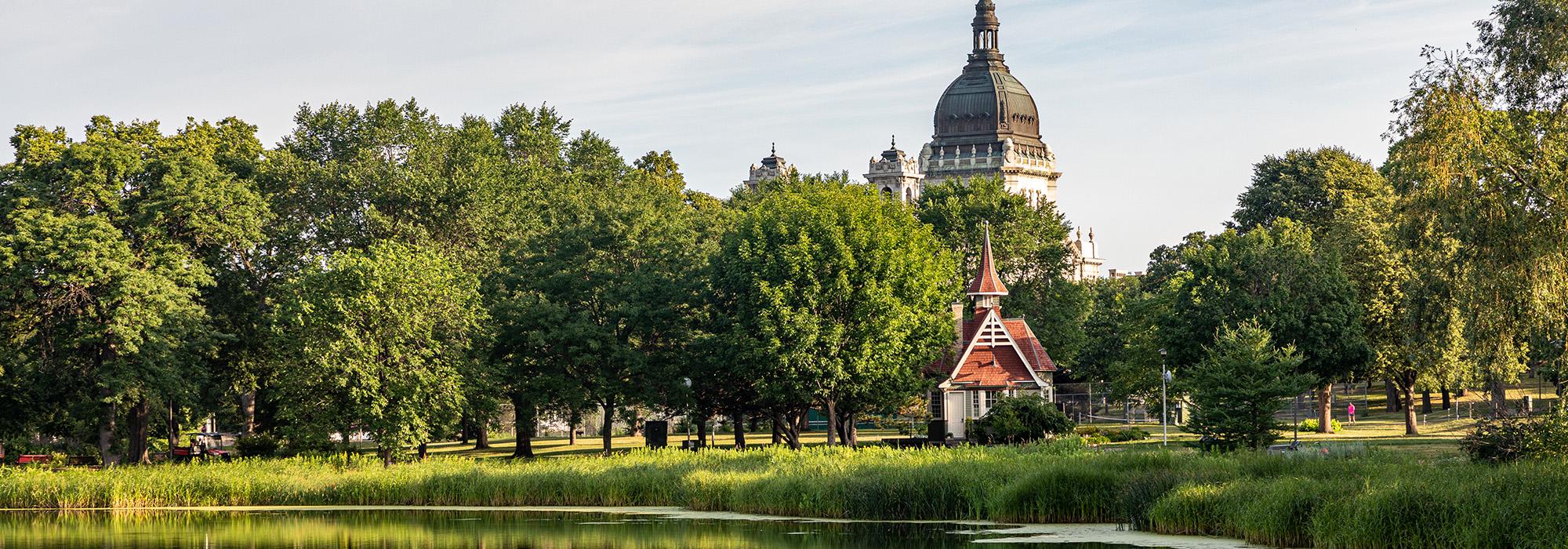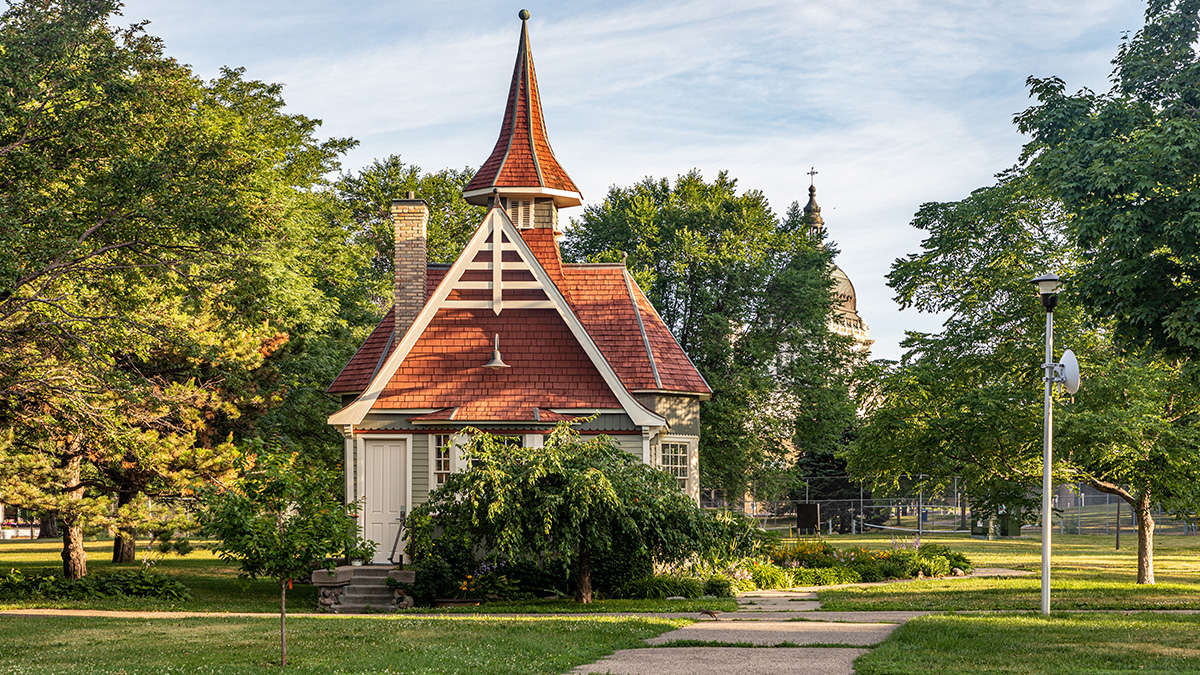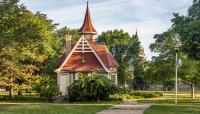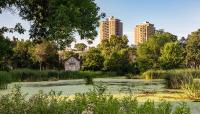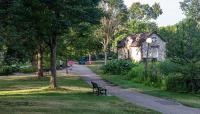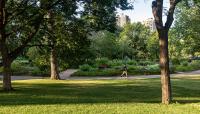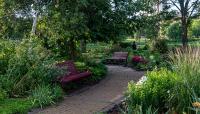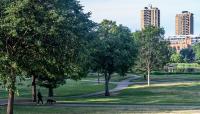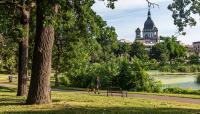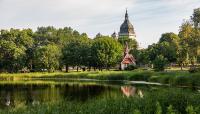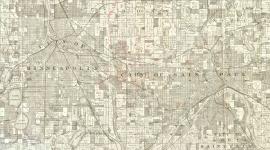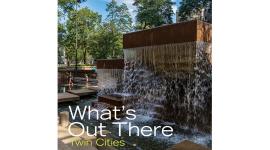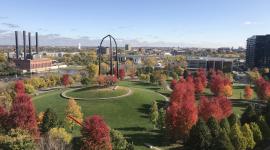Landscape Information
One of the first parks created by the Board of Park Commissioners, established by public referendum in 1883, it was designed by H.W.S. Cleveland, who envisioned it as the hub of an extensive park system in Minneapolis and Saint Paul. The park was renamed in 1890 to honor Charles Loring, the board’s first president.
The 30-acre park grew to 36 acres, but later lost two acres to freeway encroachment and street-widening. Curving paths flow to the park’s perimeter from a figure-eight shaped pond with an iron bridge built at the pond’s “neck” (in 1885; replaced in 2006). Plantings include a variety of tree species, predominately pines, oaks, and maples. A late twentieth-century garden with concentric circles of paths, an illusion to Cleveland’s original, lies east of the pond at the park’s center. Understory trees shrubs and herbaceous plants are dotted throughout. A petite office for park superintendent William Berry was erected in the park in 1889, serving as a toolshed and other functions after Theodore Wirth replaced Berry. It was moved several times and restored in 1998. The Spanish Colonial Revival shelter (1906) received additions in the 1930s and 2003. A comfort station (1916) in the same style is now a maintenance building.
The Irene Hixon Whitney Bridge (1988) links access to the Minneapolis Sculpture Garden, and the Whitney Gazebo (1993), both designed by sculptor Siah Armajani. Other art includes Jacob Fjelde’s statue of Ole Bull (1897), a Norwegian composer/violinist, and Robert Woodward’s Berger “Dandelion” Fountain (1975). The Loring Greenway to the east leads to Nicollet Mall.



